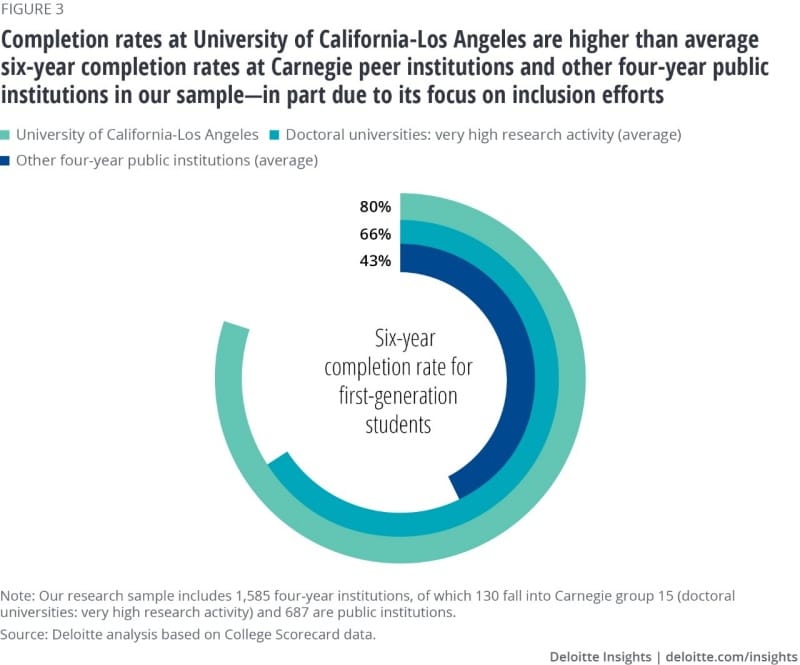Five strategies for student success has been saved
The authors are grateful to those who shared their time and insights to make this report possible, including David Noone, Alok Ranjan, Utkarsh Londhe, Kannan Thirumalai, Glynis Rodrigues, and Aishwarya Rai at Deloitte, and Kai Lou, director of strategic partnerships at Salesforce.org, for kicking off this project with Deloitte.
The authors are indebted to the following senior leadership teams that graciously shared their time, insights, and experiences with us: Lawrence Ward, VP and dean of campus life at Babson College; Berhanu Tadesse, AVP for IT and Academic Technology Services at CSUF; Kevin Borek, VP of IT & CIO; and David Burge, VP, Enrollment Management at GMU; Anthony Allen, former SVP, Karenann Carty, SVP, Academic & Student Affairs, and Janice Girardi, AVP, Institutional Assessment at Monroe College; Darcy Van Patten, CTO and Sarah Wieland, assistant vice provost, Distance Education at UArizona; Monroe Gorden, vice-chancellor, Student Affairs and Arun Pasricha, CIO, Student Affairs at UCLA; Theodorea Berry, vice provost, Student Learning & Academic Success, dean of undergraduate studies and Thomas Cavanagh, vice provost, Digital Learning at University of Central Florida; Tammy Aagard, AVP, Enrollment Management, Mary Kay Carodine, AVP, Student Affairs, Brian Karcinski, director, Finance and Admissions, Tobin Shorey, director, Curriculum Monitoring and Analysis, and TJ Summerford, Information Technology principal, Institute of Online Learning at University of Florida.
Cover image by: Dan Page






















